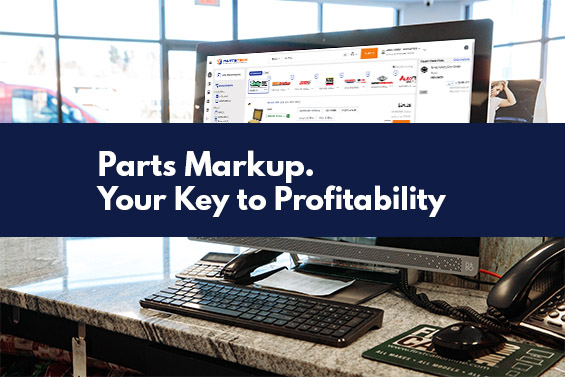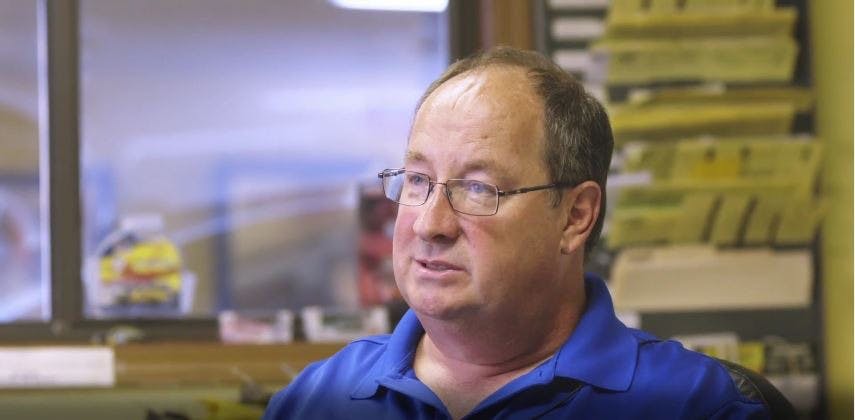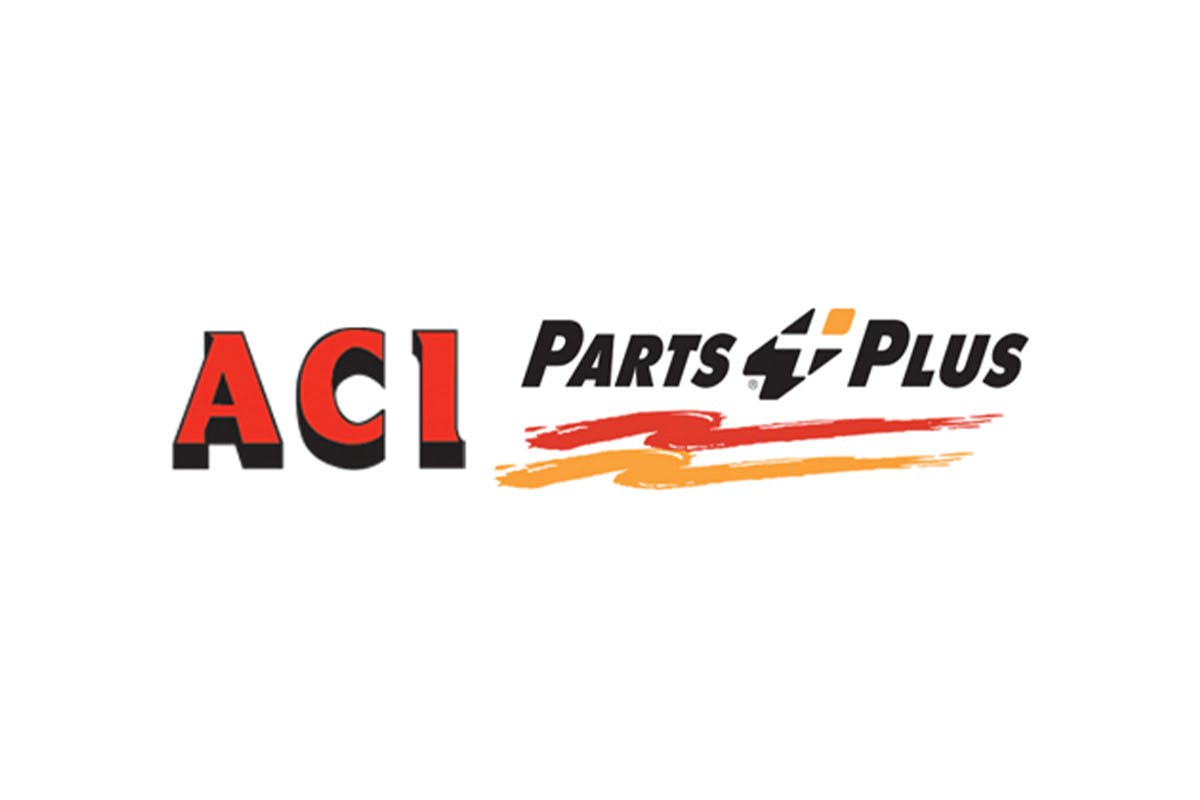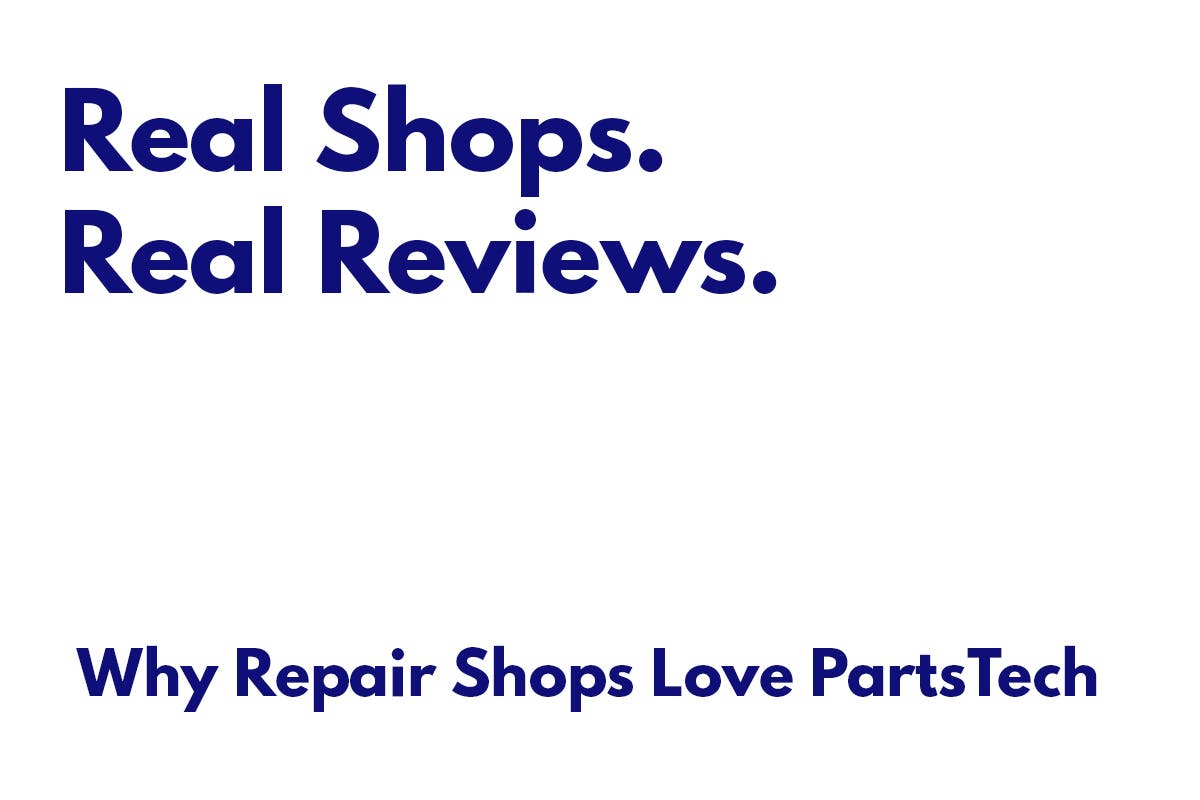

Gateway to the West
Erik: We’re a parts ordering company, so let’s get to it. How do you order parts here?
Jeff: Well most everything is web based now. There’s not so much telephone. The only time the telephone really comes into play is when you have to physically say, “Hey, timeout, I gotta talk to somebody about this because the website isn’t giving me enough information.” Now, it’s at the point where I use my cellphone to text pictures to my local auto parts store when we don’t have pictures and things like that. When you have a web-based program, a lot of times they offer to have pictures and things like that by different websites. Most of your big manufacturers have different websites. We don’t like to have a bunch of people to buy from, so we like to have that one place that we can go to and see all the vendors, that works a little bit better. Say for instance you want to buy a motor mount – you can go to Anchor, Anchor makes the mounts. Or you can go to your local supplier. They have the same part numbers, with maybe a little bit of variance, and being able to buy that and being able to see the pictures on the website – Anchor provides the pictures that maybe our local vendor website doesn’t provide. So it helps out.
Erik: That takes all the guess work out of the game. As soon as you see the photo, then you know you’re looking at the right part. So how many vendors do you guys buy from?
Jeff: We’re probably around 6. 6 to 10. Mostly 6. There’s always new ones trying to come on board. But we know with the background, we know who the good guys are and where our deals are at. We buy quality parts, so that you (the customer) aren’t buying things that are no good.
Erik: How do you order from those guys today?
Jeff: Most times its click and order. You put the VIN in the website. The VIN deciphers everything. You pick the part by category. To pick the part, you kind of have to have some experience to know where things are. Once you pick the part, you put it in your cart and press play, then it comes to us.
Erik: As you’re researching, are you visiting one site or multiple sites?
Jeff: Multiple sites. And that’s where one site would really help out, because you could get there and see everything all at once. It helps out on being able to put an estimate out. Say for instance somebody’s on the phone, you need to be crisp and clean with your estimates and you need to know exactly where you’re going to be able buy the part, who’s going to have the part. You certainly don’t want to put an estimate out there and then say, “Oh, by the way, that part is not available.” It’s good to be able to see the inventory and what they have, and all the things that play a role into making a good quality repair.
Erik: If you had to put a number on it, if you thought “how much time do I spend per vehicle looking around for parts?” Is it a minute, 10 minutes, 15 minutes?
Jeff: No, I would say in research, we do a lot of transmission work, so there’s a lot of parts and transmission stuff like that. I would say you’re probably spending 15 to 20 minutes per an estimate. You’re spending 10 to 15, 20 minutes per estimate to find out what’s going on there. What’s available – then you have to be cost effective. If your not cost effective, if your telephone rings and you don’t capitalize, then your customer is going to go to someone else with the information you gave them.
Erik: Is that to say that it’s all about price?
Jeff: No. Not necessarily. Quality is always the thing. And it’s what’s the customer’s association with what they know about a car? For instance, if they need a tie rod end and you tell them a MOOG tie rod end, they may say “OK, MOOG’s been around for a long time, that’s the one I want. I’ve never heard of this [other brand].” In other markets, people don’t have any idea what part it is, but that’s where you go back to your warranty. You have to buy a part that going to be filed under your warranty. If you’re going to sell something that’s 12 months, 12,000 warranty, you don’t want to be putting it on two times. You don’t want the customer has a discomfort, and you don’t want to sit there and explain why the parts defective.
Erik: And availability must be important, right?
Jeff: Yeah and that’s what the web based programs will help you with. What’s available? You can see how many, where it’s available. We deal with one particular vendor that has 4 warehouses in St. Louis here, and with the 4 warehouses I can see, “Hey, this part is in Hazelwood. So if it’s in Hazelwood, I know I’m not going to get this thing until 11:00.” But I can see their availability and what’s available. If they’re down to 1 on hand, I’m going to watch my P’s and Q’s to be sure that I don’t sell a part that I can’t get my hands on. This particular website, we can actually get next-day out of Kansas City, so as long as I get everything in on time, I can do something for a customer pretty good. And that’s important because not always is your local auto part store going to have that. So many of them now are regular mom and pop, or they don’t have a lot of stock, or they have a hub or something like that. And that’s important to be linked up with the hub for multitudes of reasons, just like I said, it may be in Hazelwood, it may be in Ellisville. Who knows where it’s at? When can I get it and when can we have it in our hands? It’s important, because our shop works from 8 to 5 and we’re competing against people that are 7 in the morning and they’re 7 days / week. I can go home, eat dinner and get my alignment done at 8 PM at night and be ready for work tomorrow morning. That’s what you’re competing against, so you need to have a good price and everything’s got to be in order – you have to be able to rely on those people and seeing inventory makes all the difference in the world.
Erik: Right. If you guys have a car on the lift and you need a part to get the car off the lift, then it’s availability right?
Jeff: Yeah. Oh Yeah. It’s important. It’s important that you have your hands on it. That’s why you end up with multiple suppliers. That and also competitive pricing – you want the pricing to be right for the customer because, if we don’t do checks and balances, the pricing tomorrow is going to be higher than today. We all know that. That’s why we use a bid system and go through and look at different things.
Erik: You mentioned that you’re running a shop management system. How does that work with online ordering?
Jeff: Well, Omnique is our system and it has been a real good system. Nothing is 100%, but it is a real good system. They are at the other end of the telephone if I dial the number. They’re ordering system, they are constantly integrating with people and constantly trying to do the right things and get us that one-touch ordering. The greatest thing is that you can order the part and flip it over to your invoice screen and it’s ready to invoice. You just add your labor to it and the customer has a pretty quick quote, really fast. It’s really made that a lot easier. The times of “I’ll get back with you in a little while” and when you hang up the phone, the guy’s calling the next shop. You know, whoever gives that guy the answer – a lot of times it’s not about price, it’s about time for people. Price is a part of it, but the biggest thing is it’s time. The customer wants it now, and they don’t want to wait for it. If it’s 4 O’Clock in the afternoon, you close at 5, time means a lot. If you’re going to get the job out the door that day for the customer, or if he is going to make the decision to go to one of these shops that’s open to 7, 8, 9 o’clock at night. It’s important that you have all your pieces in place. A shop management system allows you to get the information out there, get the bid out there in the proper amount of time. And the customer comes back and say, “Hey, that guy called me back first. He did a good job, he gave me a good idea. He’s $10 more than the rest of the guys, but he seems like he wants to fix my car.” You’re in with that deal. It’s all about the timing, if I had gotten back to him the next day, I would have lost that job. Somebody else would have been doing it by the time I called him back. He’d have been home, after the road test, home picked his car up and said “Oh, job’s done.” They expect it right now, and they expect you to be there at 6 o’clock on the telephone. And that’s a thing in and of itself, that whenever you have a market out there, people can drive 3 miles here and have that market. It’s important for us to capitalize on our numbers and what we need to do to make a good repair for the customer and also make a profit and get the job done in a timely fashion.
Erik: When you think about technology generally in the repair business, what do you guys think is going to impact the business the most in the next 5 years?
Jeff: We’re definitely an electronics business, we’re so much in the technology age now. I would never have thought of texting my auto parts guy a picture of a parts that I need, but that’s where technology’s there. And it’s free and convenient. I pay for a cell phone service, but I still use it because it works. And the internet is at your fingertips for everything. There’s times that you get stuck and nobody has the part. Where are you going to find it? And then you find it. You’ve got websites out there, you can always go to the manufacturer, you may have a store that you didn’t even know within a mile or two of your shop. We bought a head gasket that nobody had in town the other day and ended up having to shave the head and put a shim in it, and the shim was in 15 minutes of us. We had never done business with these people before but technology brought us there.
Erik: That’s incredible. You found them online?
Jeff: Yeah, it really is incredible because look at the customer. If I were to have to call the customer and say you’re not going to get your car, it’s going to be a few more days, it’s going to be a little more money. If you can control that adversity, it’s so much better for you, your business and that customer. You can always tell the customer what you went through on the backside, once you’ve got them happy and show them to say, “Yeah, we went through a lot to do this.” This particular girl has a Volvo, so she knows she’s got a little bit more of a premium car and she knows she’s going to pay a little more of a premium price for every part that’s on there. Each one of those prices is going to be different. But the biggest thing is availability. You tell someone you’re two weeks out, you’ve lost that customer. They’ve moved on. It’s just like a furniture business, where if you have a couch on the showroom floor versus one I can order you a week from now. Which one is going to sell? The one on the floor every time – even though it’s not exactly what they want, but the bottom line is that if it’s quality and you feel comfortable that you can take your warranties and everything, takes care of itself.
Erik: So it’s an interesting point you just made, so you feel you need to understand part availability very quickly in order for you to win jobs.
Jeff: Right. Yeah, you’re winning bids. You’re making people feel comfortable that you’ve got this. I can handle this problem and get it taken care of. You just can’t say “I don’t know, let me check.” The customer doesn’t want to hear that. They want to know when their car is going to be done and how much is it going to cost. So that’s where your cost factor comes in: is it affordable? And people spend money every day, they just want a good quality product that’s going to be warrantied. With Cottman, you have a nationwide warranty on it, so that beats out a lifetime warranty all day long. These guys have been around for a long time, so I’m comfortable with them. I’m not so comfortable at Jim Bob’s transmission shop. He may be a great guy, but the bottom line is that the marketing isn’t in place, so he’s not going to get all those bids whenever your price is there, and the quality of parts and the speed of getting back to the customer on estimates and things like that. That’s one thing they don’t want to do is wait half a day on an estimate. They want it now, and if you’re busy doing estimates, there’s times where that telephone rings and you’re in the middle of an estimate, you need to get to the next estimate. Whenever you have that one-stop place or website that you can get to, you can have the information, your tools at hand to know what’s going on and you can capitalize on that to put things together.


